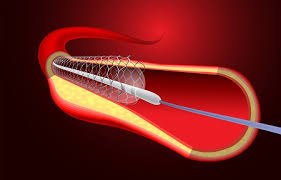
Picture this: your favourite highway, smooth and free-flowing, suddenly choked with traffic. Annoying, right? Now, imagine that happening inside your heart, with blood flow being disrupted. Scary, isn’t it? That’s where angioplasty swoops in like a superhero.
If our heart’s arteries are the highways, then angioplasty is like that emergency crew clearing up a massive jam, making sure traffic – or in this case, blood – flows smoothly again. For heart patients, understanding angioplasty isn’t just crucial; it’s a game-changer. Because, honestly? It could be the difference between a stop and go. So, let’s get the lowdown on this life-saver, shall we?
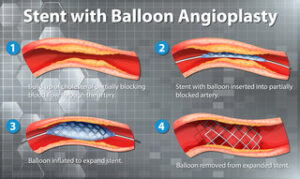
What is angioplasty?
Angioplasty, in simple words, is a procedure to unblock heart arteries. Think of it as a plumber unclogging pipes. But here’s the cool bit: this isn’t some modern marvel. It’s got history! The concept first saw light in the late 1970s.
Yep, while disco balls were spinning, doctors were pioneering. The main goal? To offer an alternative to heart bypass surgery. Over the years, as with old tunes getting remixes, angioplasty techniques got refined. Today, it’s a go-to method for many heart patients.
So, next time you’re jamming to a 70’s hit, remember the groundbreaking heart revolution that was also in play!
Who needs to have an angioplasty?

Ever felt like someone’s squeezing your chest? Or maybe there’s that nagging shortness of breath during your morning walks?
Let’s break it down: not every chest pain is a ticket to angioplasty-land. But some signs scream for attention.

If you’ve had a heart attack or frequent angina (that’s fancy talk for chest pain), angioplasty might be on your horizon.

It’s like this: when certain heart-related symptoms refuse to play nice, angioplasty comes into the picture to restore peace.It’s not just a choice; sometimes, it’s a need. Just like you wouldn’t ignore a leaky roof in monsoon, you shouldn’t overlook persistent heart symptoms.
After all, it’s about keeping the heart’s rhythm smooth, right?
What does angioplasty treat?

When arteries play hard to get, that’s where it steps in. Imagine a busy road suddenly getting clogged; chaos, right?Similarly, when our arteries get blocked, our heart strains. It’s like it’s screaming, “Hey, I need more space!”
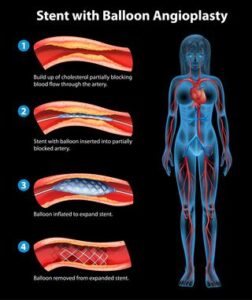
It swoops in to save the day, widening those narrow paths. It’s practically a hero for our blood flow, ensuring the heart gets what it needs.
This is crucial, folks! Without it, we’re looking at serious heart issues. Heart attacks, strokes – scary stuff. But thanks to angioplasty, we have a fighting chance.
It’s about giving our heart the room it needs to thrive. So, let’s hear it for angioplasty – our heart’s own superhero!
How common is angioplasty?
Angioplasty is like the popular kid in school; everyone knows it. In fact, millions around the globe get this life-saver every year. It’s not an exaggeration; it’s just that common. In India, approximately 450,000 patients receive angioplasty procedures every year.
In the United States alone, they perform over 600,000 of these procedures annually. That’s a lot, right? It’s like if you lined up all those patients, you could fill countless football stadiums!
And it’s not just for the elderly; it spans all ages. This shows the sheer impact heart issues have on us.
It’s a reality check, saying, “Hey, take care of your heart!” So, yes, it’s pretty common. But more importantly, it’s a beacon of hope for many.
Procedure Details of Angioplasty
When it comes to angioplasty, it’s crucial to understand what exactly is going on.
It is a lifeline for many, opening up blocked arteries that could lead to heart attacks.
It’s not just one procedure; there are different types of angioplasty.

Balloon Angioplasty:
This is where it all began. In this procedure, a small balloon is threaded through your blood vessels. Once it reaches the blocked area, it’s inflated.
This pushes the plaque against your artery walls, making way for blood to flow again.
Think of it like a mini plunger opening up your plumbing at home. It’s swift, it’s effective, and it’s been a game-changer for heart patients globally.
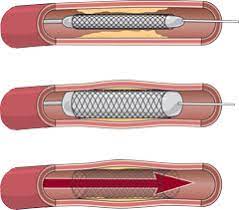
Stent Placement:
Over time, we realized that just pushing the plaque aside wasn’t enough. Sometimes, the artery would collapse back.
Enter stents — tiny mesh tubes that act like scaffolding. They’re placed in the artery post-balloon angioplasty, keeping the pathway open.
It’s like putting a support beam in a tunnel; it prevents the tunnel from caving in, ensuring a clear passageway.
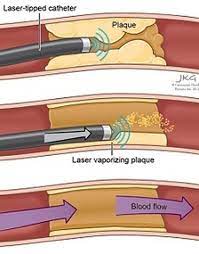
Laser Angioplasty:
For the more stubborn blockages, lasers come to the rescue. A catheter with a laser attached is used to break down the plaque.
It’s precision at its best, targeting just the blockage and leaving the rest of the artery unharmed.
Imagine a skilled artist chiselling away at a block of marble, shaping it to perfection. That’s laser angioplasty for you.
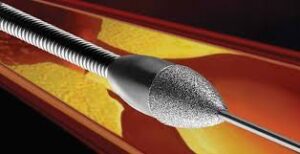
Atherectomy:
Some blockages are too hard for balloons and lasers. That’s where atherectomy comes in. A tiny blade on a catheter shaves away the plaque.
It’s like having a microscopic sculptor inside your arteries, carving away the blockage.
What Happens Before, During, and After Angioplasty
Before:
Preparation is key. Your doctor will guide you through the process, ensuring you’re ready for what’s to come.
They’ll run tests, check your medical history, and make sure it is the right call for you.
During:
The procedure is intricate but done with utmost precision. A catheter is inserted, usually through your groin or arm.
Guided by X-rays, it makes its way to the blocked artery. Then, depending on the type of angioplasty, the blockage is cleared.
After:
Recovery is crucial. You might need to stay in the hospital for a bit, but the goal is to get you back on your feet. There will be medications, follow-up appointments, and lifestyle changes.
All are aimed at keeping your heart strong and your arteries clear.
In the end, angioplasty is about giving your heart a fighting chance. It’s a procedure filled with hope, precision and a lot of medical expertise. And understanding it is the first step towards a healthier heart.
Risks and Benefits of Angioplasty: The Double-Edged Sword
Now, let’s get real for a moment. It is like a guardian angel for your heart, but it’s not without its risks.
However, don’t let that scare you away. The benefits often tip the scales in favour of this life-saving procedure.
Benefits of Angioplasty:
First off, it can be a lifesaver. It can stop a heart attack in its tracks, bring relief from chest pain, and prevent potential damage to your ticker.
It’s like having a superhero for your heart, swooping in to clear the path and restore peace.
The procedure is less invasive than open-heart surgery, meaning you recover faster.
Imagine being able to bounce back quickly, getting back to your family and the things you love. That’s the power of angioplasty.
Risks of Angioplasty:
Now, onto the risks. No superhero is without their vulnerabilities. Sometimes, the artery can re-narrow, a situation known as restenosis.
It’s like when weeds regrow in a cleared garden, frustrating but manageable.
There’s also a small risk of the artery becoming damaged during the procedure. Picture a delicate piece of machinery; it needs careful handling.
The same goes for your arteries during angioplasty.
And let’s not forget, there’s a tiny chance of complications like heart attack or stroke.
But remember, the experts are on hand, ready to deal with any situation that arises.
Angioplasty, while not without its risks, is a beacon of hope for many.
The key is to weigh the pros and cons, talk to your doctor, and decide what’s best for your heart.
Your heart is worth it, don’t you think?

Recovery Time Post-Angioplasty: A Journey Tailored to You
So, you’ve conquered angioplasty. Now what? It’s time to talk recovery.
But remember, just like fingerprints, no two recovery journeys are the same.
Personalized Recovery Time:
Generally, you might spend a night at the hospital just for monitoring. Think of it as a mini-vacation with top-notch medical staff at your service.
You’re the VIP, and they’re there to make sure everything is ticking along just right.
Most folks can head back home the next day, but hold your horses—don’t plan on running a marathon just yet. Your body’s been through a lot; give it the rest it deserves.
The Role of Overall Health:
Now, here’s the kicker. Your recovery time isn’t just about what happens in the hospital. It’s about YOU.
Your overall health plays a huge part. It’s like having a garden; the better you’ve taken care of it before, the quicker it bounces back after a storm.
If you’re generally healthy, you might be back to your daily grind in a week. But if your heart’s been through the wringer before, or you’ve got other health issues, it might take a bit longer.
And that’s okay. It’s not a race; it’s a journey.
Listening to Your Body:
Pay attention to your body. It’s like having a conversation with an old friend—it won’t lead you astray. If it’s telling you to slow down, listen. Your heart will thank you.
So, give yourself the time you need. Your heart is doing its best, and so are you. You’ve got this!

Hitting the Road and Getting Back to Work After Angioplasty
It’s done, and you’re itching to get back to life. But when’s the right time?
Back to the Daily Grind:
On average, people take about a week off work. Think of it as a short break. It’s like pressing the pause button on your favourite show; you’ll jump back in soon.
Driving Again – Vroom Vroom:
As for driving, usually, you can get behind the wheel after a week. It’s like being grounded and finally getting the keys to the car back.
Every Heart Has Its Own Beat:
But remember, we’re all different. Our hearts, our health, they’re unique to us. It’s like having a custom-made suit; what fits for one might not fit for another.
Check-in With Your Doctor:
So, the golden rule? Talk to your doctor. They’re like the GPS in your car; they’ll guide you on when it’s safe to hit the road and get back to the grind.
Your doctor knows your heart’s story, the ins, and outs. Trust them to set the pace.
So, take a breath, and give yourself a pat on the back. You’ve got a green light ahead, just wait for the signal.
Conclusion-
We’ve journeyed through the angioplasty maze together, haven’t we? It’s a lot to take in, but you’ve done great. It’s a game-changer, sure. It can clear blockages and restore blood flow like a superhero. But it’s not a solo act. Your heart’s a treasure; protect it fiercely. Feeling chest pain or breathlessness? Don’t play the guessing game. Ring up your cardiologist, pronto. They’re like the detectives for your heart, ready to solve any mystery.
Remember, you’re the captain of your ship, the master of your fate. So, steer bravely. The sea might get rough, but you’ve got this. How about scheduling a heart-to-heart with your cardiologist this week to ensure your ticker is in top-notch shape and discuss whether an angioplasty might be your pathway to a healthier, fuller life?
